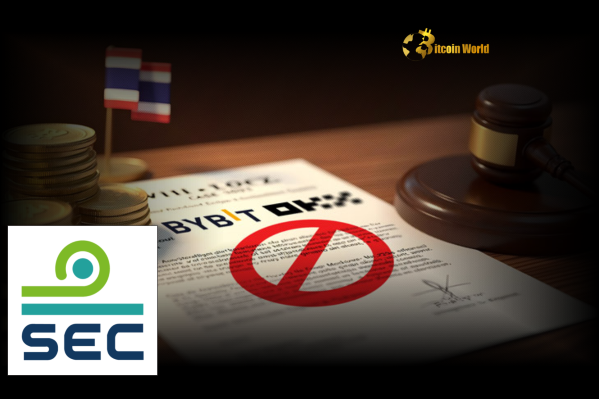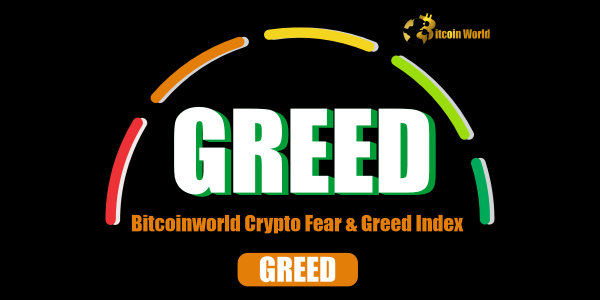BitcoinWorld

Unlocking Potential: How ETH Unstaking Fuels a Shift to Digital Asset Treasury Companies
The cryptocurrency landscape is constantly evolving, presenting new opportunities and shifts in investor strategies. A recent insight from ARK Invest CEO Cathie Wood has captured significant attention, suggesting a fascinating new trend: ETH unstaking is increasingly driven by a strategic redirection of assets towards Digital Asset Treasury (DAT) companies. This isn’t just a technical move; it represents a significant evolution in how investors approach yield generation and capital appreciation in the decentralized finance (DeFi) space.
What’s Driving the Surge in ETH Unstaking?
Cathie Wood, a respected voice in the investment world, recently highlighted on X (formerly Twitter) several catalysts accelerating this shift. It’s a confluence of factors creating a powerful gravitational pull for staked Ethereum (ETH) towards these innovative new structures. Let’s break down the key drivers:
- Robinhood’s Crypto Transfer Bonus: The popular trading platform Robinhood has introduced a compelling 2% crypto transfer bonus. For many investors holding staked ETH, this bonus acts as a direct incentive to unstake their assets and move them to platforms or structures that can leverage such offers, including DAT companies. It’s a tangible financial benefit that makes the transition more attractive.
- Increasing Venture Capitalist (VC) Interest: VCs are always on the lookout for the next big thing, and their growing focus on the digital asset space, particularly around infrastructure and yield-generating solutions, is undeniable. Their investments provide crucial capital and validation for emerging models like DATs, signaling confidence in their long-term viability and potential for growth.
- Institutional Investor Adoption: Beyond VCs, traditional institutional investors are also deepening their involvement in crypto. As they seek regulated and efficient ways to gain exposure to digital assets, solutions offered by DAT companies that combine staking rewards with potential for price appreciation become highly appealing. These institutions often require more structured and compliant pathways than individual investors, and DATs are emerging as a viable answer.
These forces collectively create a powerful incentive for investors to reconsider their long-term ETH holding strategies, particularly concerning ETH unstaking from traditional staking pools and reallocating it to more dynamic solutions.
Understanding Digital Asset Treasury (DAT) Companies: A Game Changer for Staked Ethereum?
So, what exactly are Digital Asset Treasury (DAT) companies, and why are they becoming so central to the conversation around ETH unstaking? Essentially, DATs are innovative financial structures designed to optimize the utility and returns from digital assets like ETH. They offer a sophisticated approach that goes beyond simple staking.
Here’s how they typically operate and why they’re gaining traction:
| Feature | Traditional Staking | Digital Asset Treasury (DAT) |
|---|---|---|
| Primary Goal | Earn staking rewards for network validation. | Optimize yield through staking, combined with capital appreciation strategies. |
| Liquidity | Often locked for periods; less liquid. | Aims for greater flexibility and potential for liquidity post-unlock. |
| Exposure | Yield from staking; direct price exposure. | Yield from staking plus strategic exposure to price appreciation once unlocked. |
| Management | Often self-managed or through simple pools. | Professionally managed strategies, potentially involving various DeFi protocols. |
The core appeal of DATs lies in their ability to provide investors with the best of both worlds: consistent staking rewards from their ETH holdings, combined with the strategic advantage of benefiting from ETH price appreciation once their tokens are unlocked. This dual benefit proposition is a powerful draw for those looking to maximize their returns in the crypto space, especially after the Ethereum Shanghai upgrade enabled ETH unstaking.
The Benefits of Shifting to Digital Asset Treasuries: Why Investors are Excited
The move towards DAT companies isn’t just a fleeting trend; it’s rooted in several tangible benefits that resonate with both retail and institutional investors. The opportunity to optimize returns while managing risk more effectively is a significant draw, especially for those who have engaged in ETH unstaking and are looking for the next strategic step.
- Enhanced Yield Potential: DATs aim to generate superior returns by combining traditional staking yields with other DeFi strategies, such as lending, liquidity provision, or even structured products, once the ETH is unstaked. This multi-layered approach can lead to higher overall APYs compared to staking alone.
- Improved Liquidity and Flexibility: A common concern with traditional staking is the lock-up period, which limits liquidity. While ETH unstaking still involves a processing time, DATs are designed to offer more flexible solutions post-unlock, allowing investors to redeploy their assets more quickly into new opportunities or access their capital when needed.
- Strategic Price Appreciation Exposure: Unlike simply holding staked ETH, DATs can employ strategies to capitalize on ETH’s price movements once the tokens are liquid. This could involve re-investing rewards, dynamically allocating assets, or participating in short-term market opportunities, giving investors a more active role in benefiting from market upswings.
- Professional Management and Diversification: Many DATs offer professionally managed solutions, which can be particularly appealing to institutional investors or individuals who prefer not to navigate the complexities of DeFi themselves. These entities can also diversify across various protocols and strategies, potentially mitigating risks associated with single-protocol exposure.
- Tax Efficiency Considerations: While tax regulations vary by jurisdiction, some DAT structures might offer advantages in how staking rewards or capital gains are managed, though investors should always consult with a tax professional.
These benefits paint a clear picture of why a significant portion of the ETH unstaking volume is finding its way into these sophisticated treasury models.
Navigating the Challenges and Risks of ETH Unstaking and DATs
While the opportunities presented by Digital Asset Treasury companies are compelling, it’s crucial for investors to approach this trend with a clear understanding of the inherent challenges and risks. No investment in the crypto space is without its perils, and DATs are no exception, especially when considering the process of ETH unstaking.
- Smart Contract Risk: DATs, like many DeFi protocols, rely heavily on smart contracts. A bug, exploit, or vulnerability in these contracts could lead to significant financial losses. While audits can mitigate some risks, they don’t eliminate them entirely.
- Regulatory Uncertainty: The regulatory landscape for digital assets, particularly complex financial instruments like DATs, is still evolving globally. Changes in regulations could impact the legality, operational efficiency, or profitability of these structures.
- Market Volatility: Ethereum, like all cryptocurrencies, is subject to high price volatility. While DATs aim to benefit from price appreciation, a significant market downturn could still impact the overall value of the treasury, even with staking rewards.
- Operational Complexity: Managing a Digital Asset Treasury requires sophisticated knowledge of DeFi protocols, market dynamics, and risk management. While some DATs are professionally managed, understanding the underlying strategies is vital for investors.
- Unstaking Queue and Gas Fees: The process of ETH unstaking itself involves a queue, which can vary in length depending on network congestion and the number of validators exiting. Additionally, gas fees for transactions on the Ethereum network can sometimes be high, impacting profitability, especially for smaller amounts.
Thorough due diligence and a comprehensive understanding of these risks are paramount before committing assets to any DAT structure.
Actionable Insights for Investors: Capitalizing on the ETH Unstaking Trend
For investors intrigued by Cathie Wood’s insights and the potential of Digital Asset Treasury companies, here are some actionable steps and considerations to navigate this evolving landscape, especially concerning your ETH unstaking strategy:
- Research Thoroughly: Before committing any capital, conduct extensive research on specific DAT companies or protocols. Look for transparency in their operations, audit reports for their smart contracts, and a clear understanding of their underlying strategies.
- Understand the Risk Profile: Assess your own risk tolerance. While DATs offer potential for higher returns, they also come with elevated risks compared to traditional staking. Ensure the risk profile of the DAT aligns with yours.
- Evaluate Liquidity and Unstaking Periods: Understand the typical unstaking queue times for Ethereum and how the DAT manages liquidity post-unlock. Does it offer instant liquidity solutions, or are there still waiting periods?
- Consider Diversification: Don’t put all your ETH into a single DAT. Diversifying across different protocols or strategies can help mitigate risks.
- Stay Informed on Regulations: Keep an eye on regulatory developments in your jurisdiction that might impact digital asset treasuries and their operations.
- Consult a Professional: For significant investments, consider consulting with a financial advisor specializing in digital assets or a tax professional to understand the implications of participating in DATs.
By taking a measured and informed approach, investors can strategically position themselves to potentially benefit from this fascinating new direction in the world of ETH unstaking and digital asset management.
In conclusion, Cathie Wood’s observation regarding the shift of ETH unstaking into Digital Asset Treasury companies highlights a significant evolution in the crypto investment landscape. Fueled by incentives like Robinhood’s bonus and increasing institutional interest, DATs offer a compelling blend of staking rewards and capital appreciation potential. While promising, navigating this space requires careful consideration of smart contract risks, regulatory uncertainties, and market volatility. For savvy investors, however, these innovative structures present a powerful opportunity to optimize their Ethereum holdings and participate more actively in the burgeoning digital economy. As the crypto market matures, the ability to adapt to such strategic shifts will be key to unlocking new levels of financial potential.
Frequently Asked Questions (FAQs)
Q1: What is ETH unstaking, and why is it happening now?
A1: ETH unstaking refers to the process of withdrawing staked Ethereum (ETH) from the Beacon Chain. This became possible after the Ethereum Shanghai (Shapella) upgrade in April 2023. It’s happening now as investors gain the ability to access their previously locked ETH, leading to a reallocation of assets based on new opportunities and incentives.
Q2: How do Digital Asset Treasury (DAT) companies differ from traditional staking pools?
A2: Traditional staking pools primarily focus on earning staking rewards by validating transactions. DAT companies, on the other hand, take a more active management approach. They aim to optimize returns by combining staking rewards with strategies to benefit from ETH price appreciation once the tokens are unstaked and liquid, potentially utilizing other DeFi protocols for enhanced yield and flexibility.
Q3: What role do Robinhood, VCs, and institutional investors play in this shift?
A3: Robinhood’s crypto transfer bonus directly incentivizes users to move their ETH, potentially to DATs. Venture capitalists provide crucial funding and validation, signaling confidence in the DAT model. Institutional investors, seeking structured and compliant avenues for crypto exposure, find DATs appealing as they offer a blend of yield and capital appreciation, driving demand for these solutions.
Q4: What are the main benefits of using a DAT for my ETH?
A4: The primary benefits include enhanced yield potential (combining staking rewards with other strategies), improved liquidity and flexibility for your ETH post-unstaking, strategic exposure to ETH price appreciation, and often professional management and diversification across various DeFi protocols, which can help mitigate individual risks.
Q5: Are there significant risks associated with Digital Asset Treasury companies?
A5: Yes, like all crypto investments, DATs carry risks. These include smart contract vulnerabilities, evolving regulatory uncertainties, the inherent volatility of the crypto market, and the operational complexity of managing diverse DeFi strategies. Investors should conduct thorough due diligence and understand these risks before participating.
Q6: How can I find reputable Digital Asset Treasury companies?
A6: Finding reputable DATs requires diligent research. Look for companies with transparent operations, publicly available audit reports of their smart contracts, a clear track record, and positive community reviews. Understand their fee structures, the specific strategies they employ, and their risk management frameworks. Always prioritize security and regulatory compliance.
Did you find this article insightful? Share it with your network to help others understand the exciting shifts happening with ETH unstaking and the rise of Digital Asset Treasury companies!
To learn more about the latest crypto market trends, explore our article on key developments shaping Ethereum institutional adoption.
This post Unlocking Potential: How ETH Unstaking Fuels a Shift to Digital Asset Treasury Companies first appeared on BitcoinWorld and is written by Editorial Team




